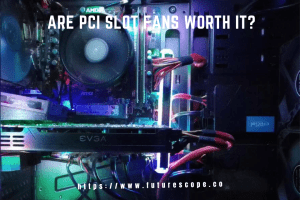What We Have Covered in This Article
Last Updated on October 14, 2022 by Editor Futurescope
Are you always curious to find out how computers and devices operate? For example, are you wondering whether you can run your PC without the Central Processing Unit (CPU)?
The CPU is like the heart of your computer and is required for numerous operations to take place. If a human can’t operate without a heart, do you think your PC can operate without its CPU?
Though you’ve already guessed the answer to this question, it’s not enough without some explanation. So, buckle up and keep reading as we explore the world of computers and help you understand why a PC might not work without a CPU. Let’s dive into this, shall we?
What is a CPU?
The Central Processing Unit (CPU) is one of the essential parts of a computer and is integral for running the computer’s operations.
This CPU is an integrated circuit that processes data depending on its software programs’ instructions and performs mathematical calculations. The CPU controls input and output devices such as keyboards, mice, or printers. Among the internal components it controls are the system clock, RAM, and hard disk.
CPUs have lots of responsibility as they contain an integrated circuit chip acting as both a processor and controller. The CPU is among the necessary components of any PC as it controls all other components and communicates with them. This communication is by a system known as a bus.
Bus sends information to different components, so they know what to do.
5 Reasons Why a Computer May Fail to Start Without a CPU
There are lots of reasons why a PC may fail to start without a CPU. Some of these are:
- The computer can’t boot without a CPU
The booting can’t occur as the BIOS (Basic input/output system), responsible for starting the PC and loading the operating system, is located on the motherboard. Additionally, you should note that the motherboard requires the CPU to run.
The loading up of an OS from scratch is known as initialization, which occurs before other programs can run. Data flow between devices such as keyboards, mice, or printers is under management by the CPU. If damage happens to the CPU, it may hinder the proper running of the PC.
- Data access without a CPU on a computer isn’t possible.
You can’t achieve data access as the CPU oversees control and communication with other PC components.
- The PC cannot load software or applications while lacking a CPU
Information and instructions from the CPU dictate whether your computer can run programs or not. Therefore, without a CPU, no loading of applications can occur.
- The PC cannot generate any video or audio without a CPU
The fact that the CPU runs all computer functions means that the PC can provide no video or audio without it.
- No internet connection without the CPU
Various servers providing internet and linking it to your computer may be unable to as there’s a missing component. Without the CPU, the PC cannot connect to the internet via WiFi or wired.
Can a motherboard POST without a CPU?
A computer can’t POST without a CPU as far as displaying the POST screen is concerned. However, beeping sounds are part of the POST process.
The motherboard is very important, and it’s like the nervous system of the PC as it joins all components that need communication with the CPU. This communication eases information and instruction transfer between them.
Therefore, the motherboard needs to test if all components are functional. That is the main essence of the POST.
What is POST?
Power-On-Self-Test (POST), the POST’s primary purpose is to check if the computer’s components are working as expected. This POST is the PC’s first test to check various sensitive systems.
After the POST is complete and successful, the computer can continue booting up. In case of the POST failure, the POST screen may display where the malfunction is or produce a beeping sound code.
The POST is simply for detecting hardware problems with the computer before booting up.
Beeping sound and flashing LED
While no POST screen displays on your screen, the motherboard may flash LEDs or produce beeping sounds indicating something amiss. This missing piece is the CPU.
Turning on a motherboard without a CPU tells if it’s dead or not.
Motherboard beep codes LED flashes in the POST process.
Many motherboards come with an installed beep code speaker, but you can purchase a cheap one if it lacks one. A beep sound code is present if the POST identifies issues with the hardware. The number of beeps represents the problem. This representation is as follows:
- 1 Beep- memory issues
- 2 Beeps- motherboard issues
- 5 Beeps- CPU issues
The list goes on; thus, you’ll receive a 5-beep sound code if you don’t have a CPU. Apart from beeping, the motherboard may flash its LEDs. The sequence of the LEDs flashing represents the issue.
Should you turn on the motherboard without a CPU?
You can switch on the motherboard without a CPU, which isn’t an issue. However, this is important as you’ll know if your motherboard is functional or not.
Special cases and exceptions
Some motherboards allow updating or flashing BIOS without CPU. These motherboard types are from ASUS and some other manufacturers. Despite not being able to access the BIOS on the motherboard, you’ll be able to update the BIOS firmware without the CPU.
Some industrial computers can also post without the use of a CPU.
Can you use a computer without a GPU?
A GPU is necessary for providing graphics on a computer monitor. The lack of a GPU may cause you only to see currently typed text and any changes made to it.
A computer can’t be used without an add-on or built-in GPU, as the GPU is necessary for video rendering. Without a GPU, you can’t see anything displayed on the PC.
Most CPUs have an attached Graphics Processing Unit (GPU) or integrated GPU. This GPU takes care of basic graphics without needing a separate graphics card.
If you’re using an old computer without a GPU, worry less, as you can simply purchase a GPU and install it on your motherboard.
Final thoughts
It’s true to say that a PC can’t run without a CPU, as the BIOS, drivers, and other components need it. If the CPU isn’t working, POST doesn’t occur, causing the PC to fail to work.
Ensure you purchase a PC that contains a CPU to prevent chances of it failing to work. Share this article with other PC fanatics to know the CPU’s importance.









